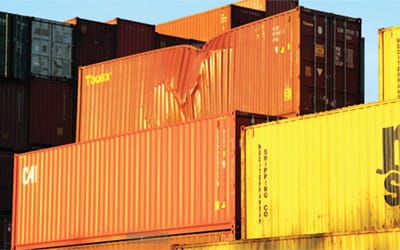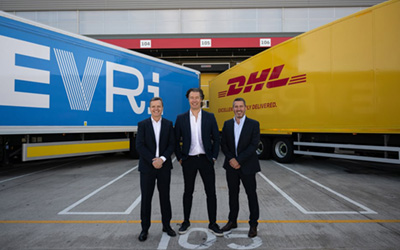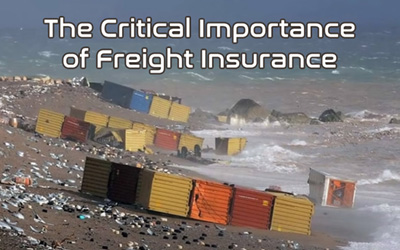The Importance of Correctly Declaring Container Weights
When it comes to global trade and logistics, few things are as critical and sometimes overlooked as the correct declaration of container weights. With the rise in international shipping volumes, the need for accuracy and compliance has never been greater. Incorrect container weight declarations can cause safety hazards, legal issues, and financial losses.
In this guide, we’ll explore why correctly declaring container weights is essential, how it affects stakeholders, the regulatory requirements involved, and the consequences of non-compliance. We’ll also provide actionable insights to help shippers stay compliant and avoid costly errors.
Why Container Weight Accuracy Matters
Safety at Sea and on Land
Correctly declaring container weights is vital for ensuring the safety of workers, cargo, and vessels. Overloaded or misdeclared containers can:
Cause ships to become unstable, increasing the risk of capsizing or tipping.
Lead to incorrect stack weight distribution, damaging cargo and containers.
Create hazards during loading and unloading at ports and warehouses.
The 2015 Tianjin port explosion and other incidents have highlighted how catastrophic the consequences can be when hazardous or overweight containers go undetected.
Compliance with Global Regulations
 Shipping lines and freight forwarders must comply with regulations such as the Safety of Life at Sea (SOLAS) convention. This international treaty mandates that the Verified Gross Mass of a packed container must be declared before it can be loaded onto a ship.
Shipping lines and freight forwarders must comply with regulations such as the Safety of Life at Sea (SOLAS) convention. This international treaty mandates that the Verified Gross Mass of a packed container must be declared before it can be loaded onto a ship.
Under SOLAS, shippers are legally responsible for verifying and declaring the container’s weight. There are two acceptable methods:
Method 1: Weighing the entire loaded container.
Method 2: Weighing all cargo and contents separately, then adding the container’s tare weight.
Both methods require the use of certified and calibrated equipment.
Incorrect Container Weight Declarations
Operational Disruptions and Delays
When weight discrepancies are discovered, containers may be held at ports or returned to the shipper, causing costly delays. Port authorities may refuse to load misdeclared containers onto vessels, impacting delivery schedules and customer satisfaction.
Shipping lines often impose administrative fees or additional handling charges for reweighing or repacking containers. Worse yet, misdeclared containers can trigger a full inspection, delaying not just one shipment but the entire container stack.
Legal and Financial Penalties
Failure to comply with container weight regulations can result in significant fines and legal actions. Countries such as the United States, UK, Australia, and Germany impose strict penalties for non-compliance.
Here’s what’s at stake:
Fines: Depending on the jurisdiction, fines for misdeclaration can range from hundreds to thousands of dollars per container.
Liability: Shippers may be held liable for damages caused by incorrect declarations, including personal injury, cargo loss, or damage to vessels.
Reputational Risk: Frequent non-compliance can harm a company’s reputation, making it harder to secure contracts with carriers and freight forwarders.
How to Ensure Container Weight Accuracy
Implement Best Practices in Container Packing
Proper container packing not only optimises space but also ensures accurate weight distribution. Shippers should:
Use calibrated scales for individual items.
Double-check tare weights printed on the container doors.
Document all cargo with weights, dimensions, and packing lists.
Evenly distribute weight to maintain container balance.
Training staff on container packing and weight declaration processes reduces human error and improves overall logistics efficiency.
Use Technology to Your Advantage
Modern logistics systems offer tools to streamline weight declaration:
Digital Weighbridges: Automated truck scales that record and report container weights.
Warehouse Management Systems (WMS): Integrate packing data with container information.
Freight Management Software: Tools like Multi Freight, CargoWise, and SAP help track VGM records and generate accurate shipping documentation.
By automating processes, companies can reduce manual entry errors and ensure compliance with SOLAS and carrier requirements.
Roles and Responsibilities in the Supply Chain
Who Is Responsible for Declaring Container Weights?
The shipper the party listed on the Bill of Lading is responsible for providing the Verified Gross Mass. However, ensuring weight accuracy involves coordination across multiple stakeholders:
Exporters and Manufacturers: Must accurately report item weights and packaging.
Warehouse Operators: Play a key role in container stuffing and weighing.
Freight Forwarders: Assist in documentation and ensure VGM is provided before vessel cut-off.
Carriers and Ports: Verify the VGM before loading containers onto ships.
📌 Note: Some terminals allow weighing services onsite for a fee, but shippers should not rely solely on this option due to potential delays and added costs.
Benefits of Proper Container Weight Declarations
Improved Safety and Reduced Risk
Accurate weight declarations ensure safer handling throughout the logistics chain from warehouse loading docks to high seas navigation. This reduces the risk of accidents, injury, and cargo damage.
Cost Efficiency and Predictability
Knowing the true weight of a container helps:
Avoid unexpected fees for overweight shipments.
Optimise cargo allocation and stacking on vessels.
Prevent customs clearance issues at destination ports.
Predictable, compliant operations reduce long-term costs and enhance customer trust.
Enhanced Supply Chain Transparency
Providing VGM in a timely and accurate manner builds confidence among stakeholders. It also ensures smooth collaboration between manufacturers, freight forwarders, and shipping lines.
When all parties in the supply chain are aligned and compliant, goods move more efficiently, and risks are mitigated.
Conclusion
Making Compliance a Core Practice
Correctly declaring container weights is not just a regulatory formality it’s a critical practice for maintaining safety, avoiding disruptions, and ensuring the smooth operation of international shipping. As global logistics become more complex, accurate container weight declarations will remain a cornerstone of compliance and efficiency.
For shippers and logistics providers alike, investing in proper training, certified weighing equipment, and digital tracking tools is the best way to remain compliant with SOLAS and other regulatory frameworks. Read the International Convention for the Safty of Life at Sea (SOLAS), 1974
✅ Key Takeaway: Always verify the gross weight of your containers before shipping. It’s safer, smarter, and saves you money in the long run.
FAQ
Q What is Verified Gross Mass (VGM), and why is it required?
A: Verified Gross Mass (VGM) is the total weight of a loaded shipping container, including cargo and container tare weight. It is required under the SOLAS convention to ensure vessel safety and prevent accidents caused by misdeclared weights.
Q. Who is responsible for declaring the container weight?
A. The shipper named on the Bill of Lading is legally responsible for providing an accurate container weight declaration and submitting the Verified Gross Mass before loading.
Q. What happens if a container’s weight is incorrectly declared?
A. Incorrect weight declarations can result in shipment delays, fines, legal liability, container rejection at port, and serious safety risks for vessels and port workers. Use a guide: Government publications Verification of the gross mass of packed containers by sea
SARR Logistics UK
If you would like to know more reach out to us today and experience a seamless, efficient, and dependable shipping solution tailored to elevate your business. For further inquiries and to explore how SARR Logistics UK can help you save money contact our team. We are always happy to help.![]()












